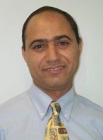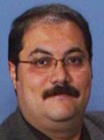Image Data Acquisition - Sensors and Platforms
President | |
 | Naser El-Sheimy
|
Vice President | |
 | Mohamed M. R. Mostafa
|
Secretary | |
 | Steve H.L. Liang
|
Terms of Reference
- Design and realization of digital aerial and spaceborne missions for Earth observation;
- Design, construction, characterization, and installation of imaging and non-imaging sensors (including Optical, IR, SAR, IFSAR, LIDAR, etc.);
- Standardization of definitions and measurements of sensor parameters;
- Integration of imaging and non-imaging sensors with other relevant systems;
- Geometric and radiometric properties, quality standards, and factors affecting data quality;
- Testing, calibration and evaluation of sensors (including laboratory, in-flight, inter-calibration and test fields)
- Integrated platform guidance, navigation, positioning and orientation;
- Data reception and pre-processing;
- On-board pre-processing of data and autonomous systems
- Systems and media for recording sensor data, auxiliary data (time, position, attitude, etc.) and film scanners;
- Image and non-image data transfer standards.
WORKING GROUPS of ISPRS COMMISSION I
INTERCOMMISSION WGs of ISPRS COMMISSION I
WG I/1 - Standardization of Airborne Platform Interface
Co-Chair
Jean-Louis Brenguier
Secretary
James R. Huning
WG I/1 Terms of Reference
- Coordinate a forum for discussion between the international airborne science communities
- Develop airborne sensor interface format standards in coordination with other working groups to promote maximum sensor portability between aircrafts increasing science yield from the sensors
- Develop airborne satellite data relay systems use for science research programs between aircraft and ground in coordination with other working groups
- Develop an airborne science literature search to identify peer reviewed published papers and citations and make a available in a data base
- Support the regulatory agencies in supporting airborne science sensor certification and approval requirements for Lidar, Dropsonde and electromagnetic spectrum emissions
- Maintain an inventory of the international airborne science capabilities and report annually
- Develop a forum to discuss transnational access system(s) for airborne users
- Support the use of UAS vehicle activity for science observations in civil and restricted airspace on an international basis and engage the ICAO
- Promote the education and outreach on an international basis of airborne based science activity
- Develop a forum to coordinate expert international workshops in categories of airborne science sensors for both Remote Sensing and in situ systems.
WG I/2 - LIDAR, SAR and Optical Sensors for Airborne and Spaceborne Platforms
WG I/2 Terms of Reference
- Evaluation and assessment of systems for processing and integrating SAR, LIDAR and optical data
- Address challenges in low-frequency spaceborne SAR system design and data processing
- Address challenges and applications of high-resolution spaceborne SAR systems (e.g. TerraSAR-X, Cosmo Skymed)
- Evaluation of Systems for generation DEMs (Resolution I.3)
- Evaluation of Multi-frequency SAR, polarimetric InSAR systems
- Evaluation of Multi-pulse and full-waveform LiDAR
- Evaluation of Range imaging with array sensor systems
- Data quality and performance validation of SAR, LIDAR and optical systems
- Liaison with external groups such as CEOS, IGARSS and EuroSDR
WG I/3 - Multi-Platform Multi-Sensor Inter-Calibration
WG I/3 Terms of Reference
- Multi-platform data acquisition and inter-calibration
- Investigate multi-source data quality control and quality assurance methods for land-, air-, and space-borne imaging and ranging systems – collaborate with WG II/4
- Develop workflow guidelines for system calibration (sensors and inter-sensors)
- Collaborate and liaise with EuroSDR (Comm I) in the development of commonly accepted standards procedures for the inter-calibration and testing of Multi-Platform Multi–Sensor systems.
WG I/4 - Geometric and Radiometric Modeling of Optical Spaceborne Sensors
Co-Chair
Karsten Jacobsen
Secretary
Gurcan Buyuksalih
WG I/4 Terms of Reference
- Geometric/radiometric calibration/evaluation of optical space sensors including laboratory (including long-term stability) and in-flight calibration activities (connections to CEOS working group IVOS)
- Comparison of existing and evolving algorithms for geometrical modelling of optical space images
- Analysis of available direct sensor orientation and modelling changes during satellite lifetime
- Evaluation of line sensors for DEM generation (cooperation with WG VII/2 Digital Elevation Models by Radar).
WG I/5 - Integrated Systems for Sensor Georeferencing and Navigation
WG I/5 Terms of Reference
- Algorithmic aspects of direct georeferencing of active and passive sensors used in marine, land, airborne, and spaceborne environments
- Navigation technology and the methods of sensor orientation in urban, indoor and forested environments
- Co-registration of heterogeneous data sets for integrated sensor navigation, orientation and calibration
- Georeferencing by integrated sensor orientation: models and adjustment procedures
- Investigate challenges and implementation issues of real-time georeferencing
- Navigation redundancy, robustness and reliability: impact of system integration
- Standards and protocols in direct georeferencing and sensor orientation.
WG I/6 - Small Satellites for Earth Observation
Co-Chair
Ugur Murat Leloglu
WG I/6 Terms of Reference
- User requirements for designing and realizing small satellite missions, including constellations, for Earth observation.
- Inventory of small satellite missions for Earth observation and system performances
- Assessment of the benefits of small satellites compared to other sources of information
- Implementation of a forum for industrial and developing countries to share their results, experiences and recommendations
- Cooperation with other ISPRS WGs.in Commissions III, IV and VII.
ICWG I/V - Unmanned Vehicle Systems (UVS) for Mapping and Monitoring Applications
Co-Chair
Henri Eisenbeiss
ICWG I/V Terms of Reference
- UVS specific issues related to navigation and position/orientation determination
- UVS platforms & instruments for photogrammetry and remote sensing. especially low-cost, consumer-type
- UVS as a tool for remote sensing instrument prototyping
- UVS as a tool for teaching all aspects of photogrammetry & remote sensing
- Document and compare UVS systems in photogrammetry and remote sensing, in terms of cost, performance, application and quality
- Liaison with Com III, VIII and EuroSDR.